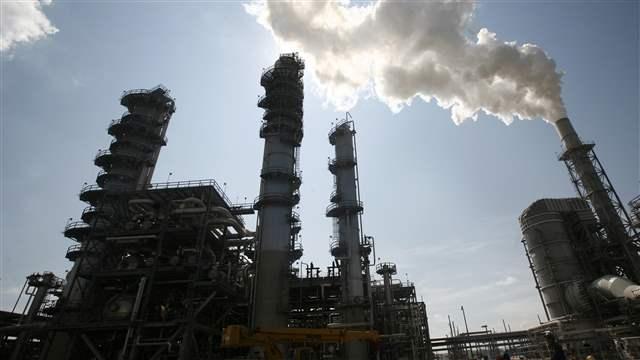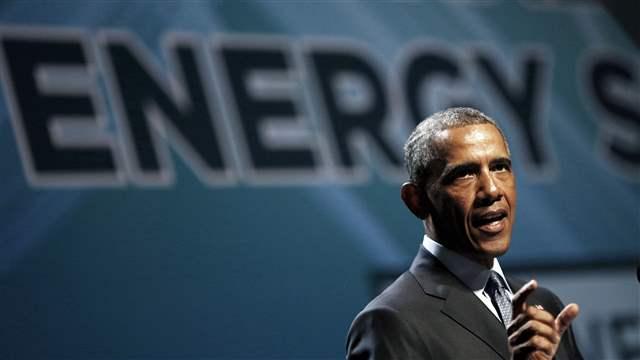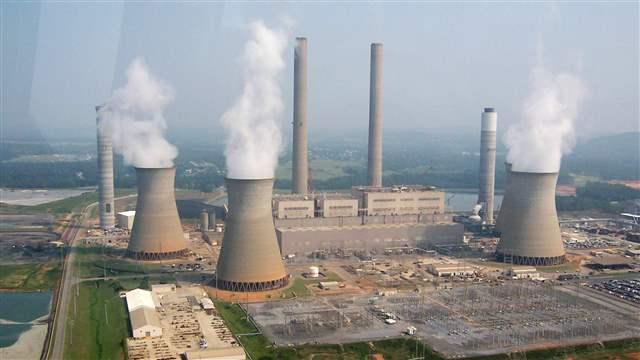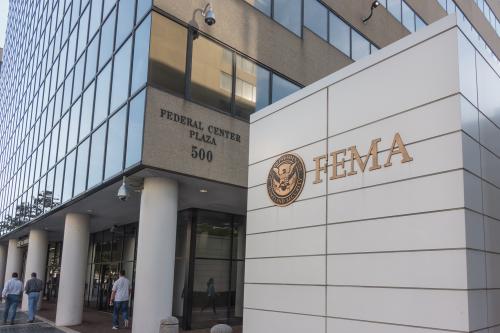The demise of the Waxman-Markey climate bill in 2010 was a serious setback to cap and trade. Although Congress abandoned climate legislation for many reasons, cap and trade was singled out as a major culprit by Republicans, and even some Democrats, who portrayed it as bafflingly complex, subject to manipulation by speculators, and likely to harm average consumers by jacking up electricity costs. Critics even used the epithet “cap and tax” to suggest that government would be demanding exorbitant fees from businesses and individuals—a mischaracterization of what Waxman-Markey actually did.
Lately, though, cap and trade has been making a comeback. After conducting pilot programs in several cities, China recently announced that it would be implementing a national cap and trade system for greenhouse gas (GHG) emissions. And the EPA’s final Clean Power Plan (CPP) strongly encourages states to use trading as a mechanism to reduce power plant emissions and loosen restrictions on trading across state lines.

CPP critics have been quick to charge the EPA with reviving a discredited and heavy-handed tool of carbon control. But the criticism cap and trade received in 2010 was undeserved then and remains so today. Its return to favor is not cause for alarm but a welcome step toward a wider use of market-based tools to meet climate protection goals.
How cap and trade works
Cap and trade rests on a simple concept: the government should set an overall limit (or “cap”) on emissions and issue tradable permits (or “allowances”) to regulated sources. Sources in the best position to reduce emissions inexpensively can over-comply and sell excess allowances to sources with higher abatement costs, enabling these sources to avoid investing in high-cost compliance measures and bringing down the overall cost of emission reduction. Cap and trade was originally seen as an economically preferable alternative to more costly command and control requirements. It was championed by the George H.W. Bush administration during development of the Clean Air Act amendments of 1990 and ultimately became the centerpiece of the new acid rain program in Title IV of the act.
The successful implementation of Title IV exceeded even the expectations of its advocates. Multiple studies showed that utilities participating in trading reduced emissions of sulfur dioxides (SO2) more quickly, and at lower costs, than predicted, and the opportunity to profit from the sale of allowances was an incentive for innovation in pollution control technology. Subsequent administrations—Republican and Democratic—built on the success of the acid rain program by applying cap and trade on a regional scale to reduce interstate transport of both SO2 and nitrogen oxides (NOx) emitted by power plants. Robust markets to trade allowances developed rapidly under these programs and emissions declined significantly without measurably raising electricity costs.
Cap and trade rests on a simple concept: the government should set an overall limit (or “cap”) on emissions and issue tradable permits (or “allowances”) to regulated sources.
A powerful tool to reduce carbon emissions
Cap and trade is not the only tool for GHG emission reduction, but it has important strengths. Placing an absolute cap on emissions provides certainty that they will remain below levels deemed necessary to avoid or limit harmful atmospheric concentrations of CO2. In this respect, cap and trade is preferable to a carbon tax, which provides financial incentives to reduce emissions, but does not guarantee that they will decline to any specific level. The cap can be tightened over time as reduction targets become more stringent, making allowances more expensive and incentivizing innovation and deployment of low-emitting technologies.
Moreover, since a ton of CO2 makes the same contribution to the atmospheric buildup of GHGs wherever it is emitted, cap and trade programs do not need to be limited geographically; they can operate at a regional, national, or even international scale. This enables the creation of large and diverse trading markets which provide emitters a wide variety of low-cost compliance options.
The nine Northeast states in the Regional Greenhouse Gas Initiative (RGGI) established a cap and trade program for power plant emissions in 2005. California has more recently launched a multi-sector cap and trade program under AB-32, its principal climate change law. The European Union has for some time been implementing an Emission Trading System (ETS) to meet its Kyoto Protocol obligations. Despite startup glitches, these programs have endured and become stronger over time.

Emissions trading under the CPP
The biggest boost to cap and trade in the U.S. will come from the CPP. In a surprising shift from the proposal, which barely mentioned emission trading, the final CPP creates an architecture designed to incentivize trading within and across states. This change in approach likely represented a deliberate decision by senior administration officials to bring cap and trade back to center stage despite the baggage it acquired during the collapse of Waxman-Markey.
The central innovation in the CPP that creates a platform for trading is the creation of uniform national emission rate targets for the two principal classes of fossil-fuel generators—steam electric (coal) and natural gas combined cycle (NGCC) units. The targets, expressed as the ratio of CO2 emissions to electricity output, represent a substantial reduction from current emission performance levels for these plant types. They were derived by calculating the effective improvement in emission rates that would result from applying the EPA’s three building blocks for emission reduction (more efficient coal plants, higher utilization rates for existing gas plants, and greater renewable energy) to the fossil-fuel generation fleet as it existed in 2012. The EPA conducted this analysis for the three major regional interconnections—Eastern, Western, and Texas—but then choose the smallest emission rate reductions as its nationwide targets.
Under this approach, all states must meet the same targets; the actual level of reduction will depend on the relative percentage of coal and gas in the state’s power plant fleet. To provide flexibility, the EPA has expressed the state targets both as average emission rate limits (for coal and gas combined) and as mass emission limits (the total amount of allowable emissions consistent with the rate target). States can choose either metric in developing their implementation plans.
Since nearly all existing plants cannot meet the rate targets through on-site technological improvements, they must look beyond the fence line to improve their carbon intensity—i.e., by effectively accessing low or non-emitting carbon sources that increase their electricity output without increasing emissions. The CPP facilitates this by allowing states to issue Emission Reduction Credits (ERCs) which represent a megawatt hour (MWh) of non-emitting (renewable) or lower-emitting (NGCC) power or avoided electricity production (from end-user demand reduction). The holders of ERCs can sell them to fossil generators as needed to reach emission rate targets, creating an ERC trading market within the state.
For states adopting mass emission limits, the currency of trading is different but the result is similar. These states would issue allowances, each representing a ton of CO2, which in the aggregate equal the state’s cap. Individual fossil generators must then hold allowances sufficient to cover their emissions. Since the cap will be below current emission levels and will decline further over time, generators will need to reduce their electricity output, increase their efficiency, and/or purchase excess allowances, which will become available as non- or low-emitting generation or reductions in demand replace current fossil-generation. This is a classic cap and trade program.
Placing an absolute cap on emissions provides certainty that they will remain below levels deemed necessary to avoid or limit harmful atmospheric concentrations of CO2.
Encouraging interstate emissions trading
The CPP then takes a further step to extend the reach of trading beyond state boundaries. It provides three paths for states who seek interstate trading opportunities. They can (1) enter into formal agreements to create multi-state trading regions (like RGGI); (2) establish trading linkages with one or more designated states; or (3) simply announce their “readiness” to trade with other states without identifying them specifically. The first path was available under the proposed CPP, but the other two have been added in the final rule expressly to remove barriers to trading among states.
There is no doubt that interstate trading of ERCs or allowances could cause wealth transfers across states or accelerate the closure of power plants in some states and shift generation to others. But with an increasingly interconnected grid in which power prices and the dispatch of generation resources are determined at a regional and even national scale, the further impact of emissions trading is not likely to be dramatic and may produce greater efficiencies in power distribution.
Interstate trading will also mean that states that are net exporters of ERCs or allowances will outperform their CPP goals, while emissions in importing states could be higher than CPP limits. But since the location where a CO2 reduction occurs is irrelevant from a climate perspective, the unequal distribution of reductions across states should not matter if they are using a common currency for trading. In this case, an ERC or allowance created in, say, Ohio, would represent the same amount of emission reduction as one created in South Carolina. So long as importing and exporting states ultimately hold sufficient ERCs or allowances for CPP compliance, the CPP’s reduction targets would be met—regardless of where the reductions occur. Indeed, if reductions occur in the states where costs are lowest and other states use trading to access these low-cost reductions, the CPP will have a lower price tag overall.

How much emissions trading will actually occur?
Despite the EPA’s efforts, the spread of interstate emissions trading under the CPP may be uneven. The CPP does not compel states to participate in interstate trading and some may decline to do so or limit trading to a small group of compatible states. (California, for example, has signaled discomfort with “subsidizing” CPP compliance in states that have historically done less to address climate change). States with Republican governors may resist partnering with “blue” states despite their common interests. In addition, because ERCs and allowances are fundamentally different currencies, the EPA has barred states with rate-based programs from trading with states with mass-emission limits. And if states in either category implement programs that deviate from the national template, their trading options will be further limited.
The EPA has attempted to encourage interstate trading by proposing “model” trading rules that would be presumptively approvable if adopted by states and would foster uniformity in trading program design among states. (Similar model rules for regional trading of NOx and SO2 were well-received by states).
The EPA has also indicated that any Federal Implementation Plan (FIP) it imposes on non-cooperating states will include trading mechanisms administered by the agency that could be linked to trading programs established under state plans. And in an effort to promote consistency and simplify trading among FIP states, the EPA has made clear that FIPs will either be rate-based or mass-based, but not both.
Despite these incentives for interstate trading under a common framework, states will retain flexibility in designing trading programs and could pursue very different paths. A key issue will be whether allowances will be auctioned (as they are under RGGI and California AB-32) or distributed free-of-charge. Another issue will be which entities are eligible to receive allowances; the options include fossil generators, power distributors, renewable energy suppliers, or energy efficiency providers. States will also need to decide whether and for how long allowances and ERCs can be “banked”—i.e., held in reserve for use in future years.
These are major policy choices with large implications for the economics of energy production and distribution. States that make different choices may still be able to trade with each other, but integrating their programs will be challenging.
The final CPP creates an architecture designed to incentivize trading within and across states.
Would a national emissions trading program be better?
Waxman-Markey would have established a nationwide trading program with one set of design features. There were (and are) legitimate questions about the Waxman-Markey framework but it would have led to a level playing field across the states. The EPA clearly has the same ultimate goal, but its chosen path was necessarily constrained by the state-centric nature of emission performance standards under section 111(d) of the Clean Air Act and its commitment to give states broad implementation flexibility. Still, within these constraints, the CPP makes a strong case for both intrastate and interstate trading and provides a powerful push for states to move in that direction. The result won’t be carbon trading at a national level, at least right away, but the number of linked state programs allowing interstate trading should greatly increase. This will lower the cost of compliance, increase flexibility, and spur innovation.
Yes, cap and trade is back—and it’s a good thing.
Bob Sussman recently completed four and a half years of service in the Obama administration, first as co-chair of the Transition Team for the EPA and then as senior policy counsel to the EPA administrator. He was a senior fellow at the Center for American Progress in 2008, writing and speaking about climate change and energy. In 2007 he retired as a partner at Latham & Watkins. He previously served in the Clinton administration as the EPA deputy administrator, chief operating officer, and regulatory policy officer.



Commentary
The return of cap and trade is good news for U.S. climate policy
October 21, 2015